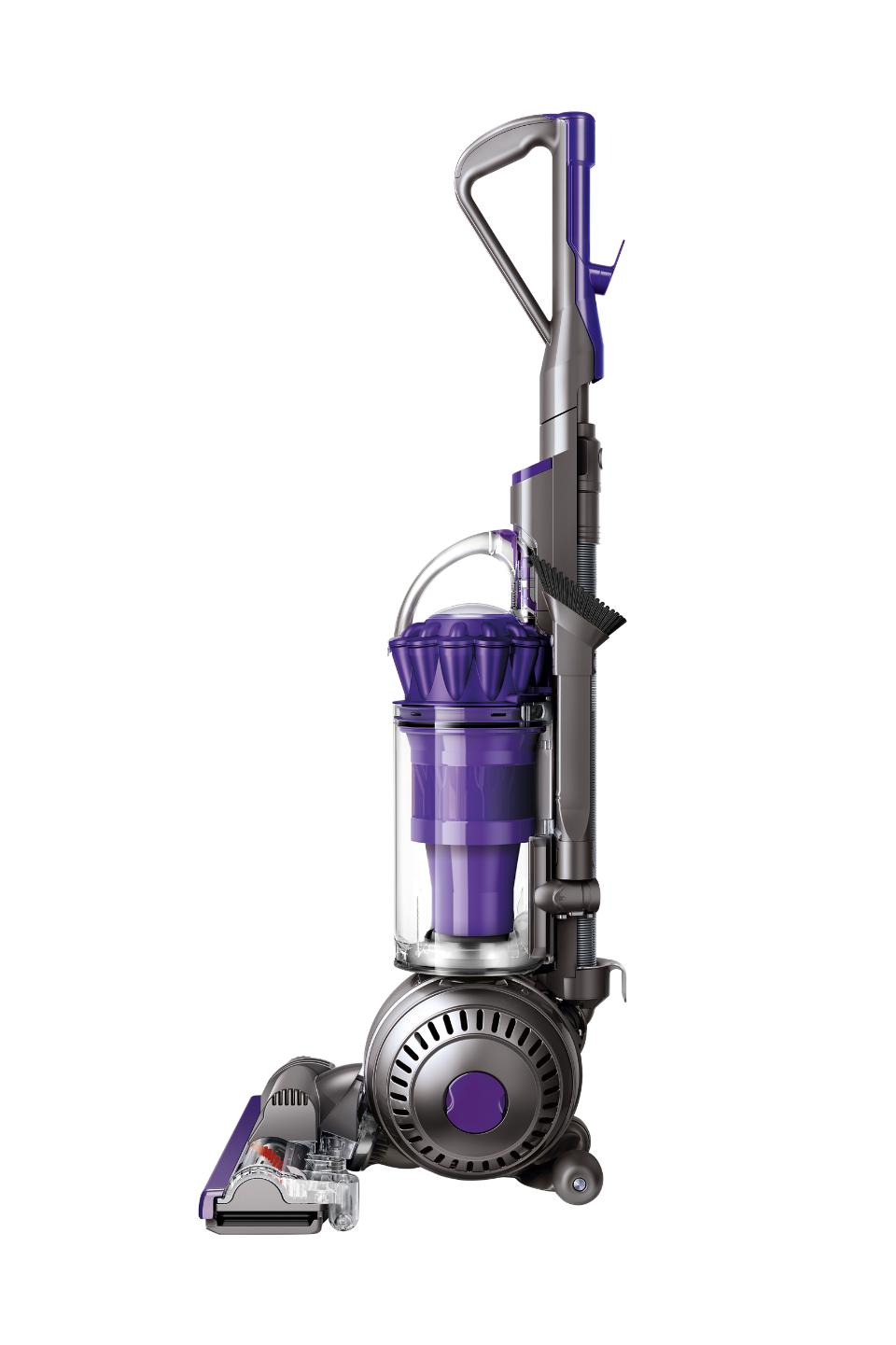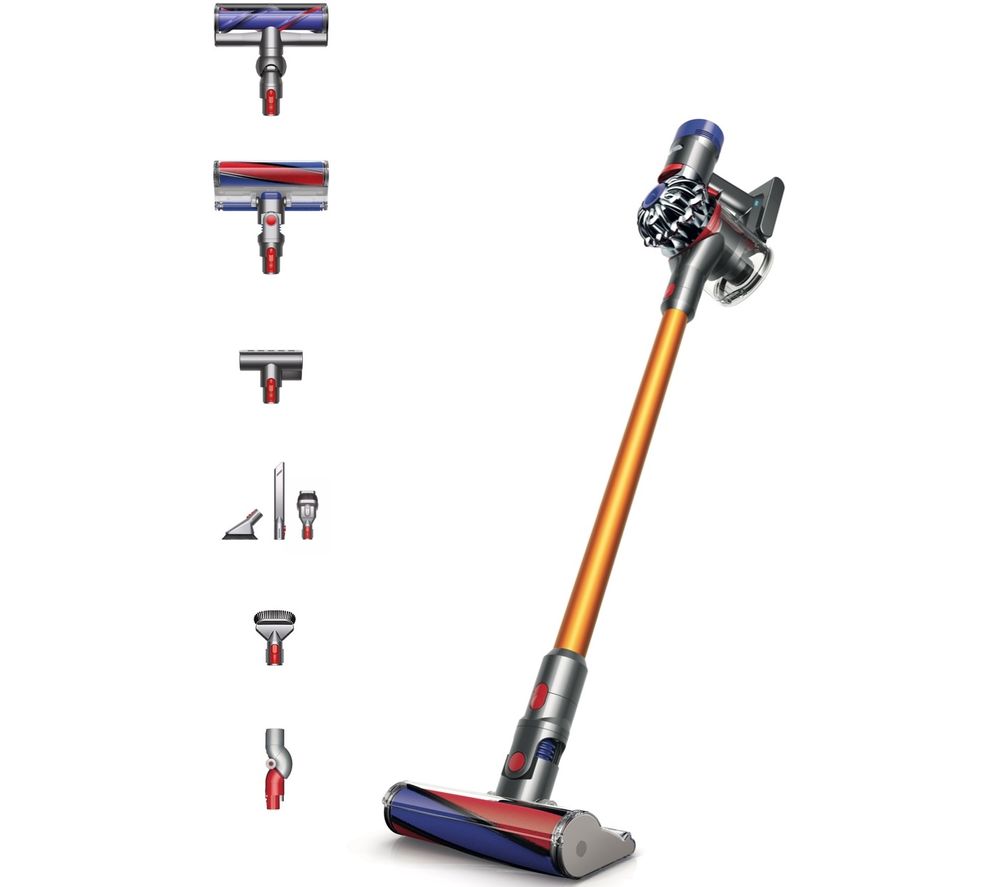Dyson Ball Animal 2 Pet Vacuum Cleaner (Purple)
Dyson Ball Animal 2 334176-01 pet vacuum cleaner for the strongest suction of any vacuum. Free shipping & 5 year warranty on all pet vacuum cleaners.
Ball™ technology
Navigate furniture and obstacles with a simple turn of the wrist, for precise cleaning.
Even more power for tough tasks
Engineered for tough tasks across all floors. Powerful cleaning on carpets, wood floors, vinyl and tile.
Self-adjusting cleaner head
Active base plate automatically raises and lowers to seal in suction across all floors. Combined with a powerful motorized brush bar, it deep cleans dirt throughout the home.
Instant-release high-reach wand
The hose and wand release in one quick, smooth action.
Tangle-free Turbine tool
Counter-rotating brush heads remove hair from carpets and upholstery, with no brush bar for it to wrap around.
One-click dirt emptying
Just push the button to release the dirt.
Stair tool
Designed for simple, effective cleaning on stairs.
Certified asthma & allergy friendly™
Certified by the Asthma and Allergy Foundation of America. Whole-machine filtration ensures that allergens are trapped inside the machine, not expelled back into the home.
Washable lifetime filter
No extra costs – just wash and re-use.
Combination tool
Flexible cleaning, for hard-to-reach areas.
Additional information
| Product Height x Length x Width (in.) | 42.13 x 15.35 x 13.39 |
|---|---|
| Weight | 17.5 lb |
| Cord length | 31 ft |
| Maximum Reach | 40 ft |
| Cyclone technology | Radial Root™ cyclone |
| Filtration | Washable lifetime filter |
| Cleaner head | Self-adjusting cleaner head |
















by Melody
This is the best vacuum I’ve ever owned, I have three dogs and a cat and this is a godsend, it is very easy to push, very powerful suction, no more having to go over my carpet two times to get the pet hair up and I have had no problem going over area rugs like some of the reviews mentioned, I would not recommend going over throw rugs though, it’s too powerful for those.
by Susan
Yesterday evening I was at Sams Club thinking about buying a new Shark, which I have 3 of already and is a decent vacuum cleaner, however the Dyson Ball Total Clean was on sale so I thought I would give it a try, expecting mediocre results.
Got home and assembled it and did a test sweep. Unlike any I’ve ever used. It is easy to use, lightweight, and has more power than any I have owned, which is many. It pulled dirt from newly swept carpet to my surprise. And not just a little dirt. It pulled up a lot, much to my embarrassment. Lol. I have used it on my wood floors and tile too and it worked equally well.
My son in law was here to watch the demonstrations and ran to Sams today and purchased the last one like it on the shelves. Yes, it’s that good.
It far exceeded my expectations.
by Shelly
The Dyson ball animal 2 is a great vacuum. The ball technology makes maneuvering around tight corners and spaces a breeze. The powerful suction is great for carpet, wood or tile and with the self adjusting cleaner head there are no issues moving between rooms. Clean up in easy with the one click emptying canister and washable filter.
by Duffy
We have only had the ball animal 2 for a week, and it is the best vacuum we have ever had. The suction is so much better than our old “top brand” vacuum. The brushes are so much easier to clean the dog hair out of. We couldn’t believe how much dust was left in the carpet from our old vacuum, that the animal 2 sucked up with ease. We will never stray from Dyson again.
by Meika
I have used my DC 25 for at least 10 years and it still works like a champ, it has a broken switch that we have tried to have replaced, but not even Dyson can come up with the part. I have considered replacing the vacuum, but the switch does not effect the suction of the vacuum so really not much of a problem. We have purchased several new beater bars and filters and clean it as the original instructions said to do, and we have never had a major problem. I am again considering replacement, but I will only replace my Dyson with another, there is no better vacuum on the market.
by Andrew
Unfortunately for me Affirm was unable to verify my identity. So that was that. I took my “beast” apart today. And good to go! That is how good is this sucker. Maybe next year will retire it I have 2 dogs and Dyson is needed here!
by Clewis
I just had new carpets installed throughout the house. I live alone with no pets and I usually vacuum once a week and never walk on the carpets with shoes. I had owned an older Dyson and just bought this new one. After the first time using it, it picked up dirt and dust I had no idea was there. The assembly of the new one was very quick, (5 min Max) as well. I am very pleased with this purchase!
by Joe
I was almost scared off to purchase this vacuum after reading some of the reviews. The complaints about the suction being so great a few people couldn’t push it on carpet is comical having used the vacuum. Perhaps if you have extremely high shag carpets, otherwise there is no issue at all. For that reason, I feel compelled to write a review myself to help others make an informed decision.
This vacuum is really well engineered. So many details were thought out to make it the best possible product, and it really shows through and through. From the assembly, written literature, warranty, 30 day guarantee, the design, and of course the functionality.
Pros
+ The assembly was ridiculously easy to do. 3 simple steps, and no tools were required.
+ The operation is very intuitive and required virtually no reason to read the instructions. But the instructions are written with simple illustrations for everything. From assembly to use of vacuum and tools.
+ The suction is quite impressive. Even after cleaning with a normal vacuum, this vacuum pulls out dirt, dust, and lint from what appears to be nowhere. I can honestly say I feel like I’ve never had cleaner carpets after using this vacuum.
+ The vacuum was easily maneuvered across normal carpeting and hard floor surfaces.
+ Attachments were great for dusting and cleaning a variety of non-carpet surfaces.
+ Dumping the debris is a simple push of a button and mild shake.
Cons
– I personally didn’t have an issue, but some folks with less strength could find the vacuum a little heavy to lift. But the large ball it rolls on make it easy to maneuver and it’s not often you need to really lift a vacuum.